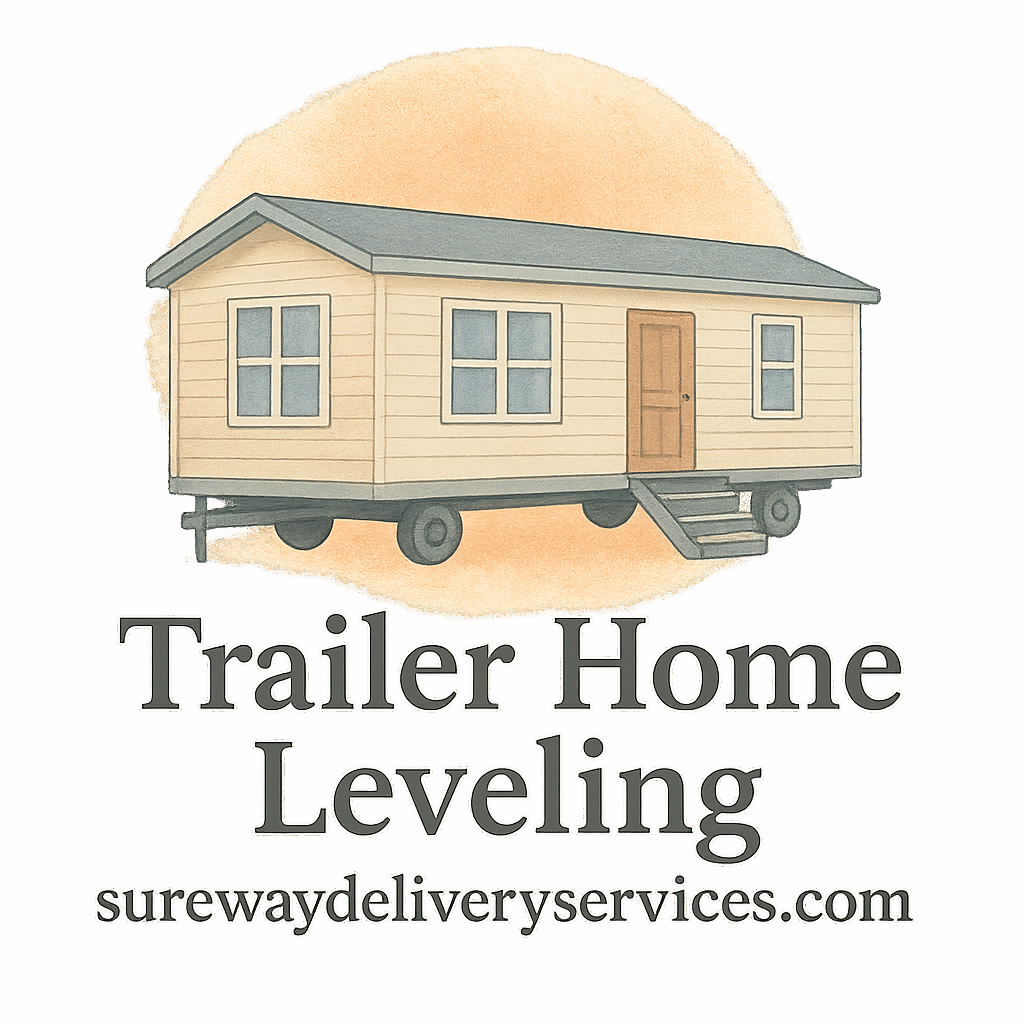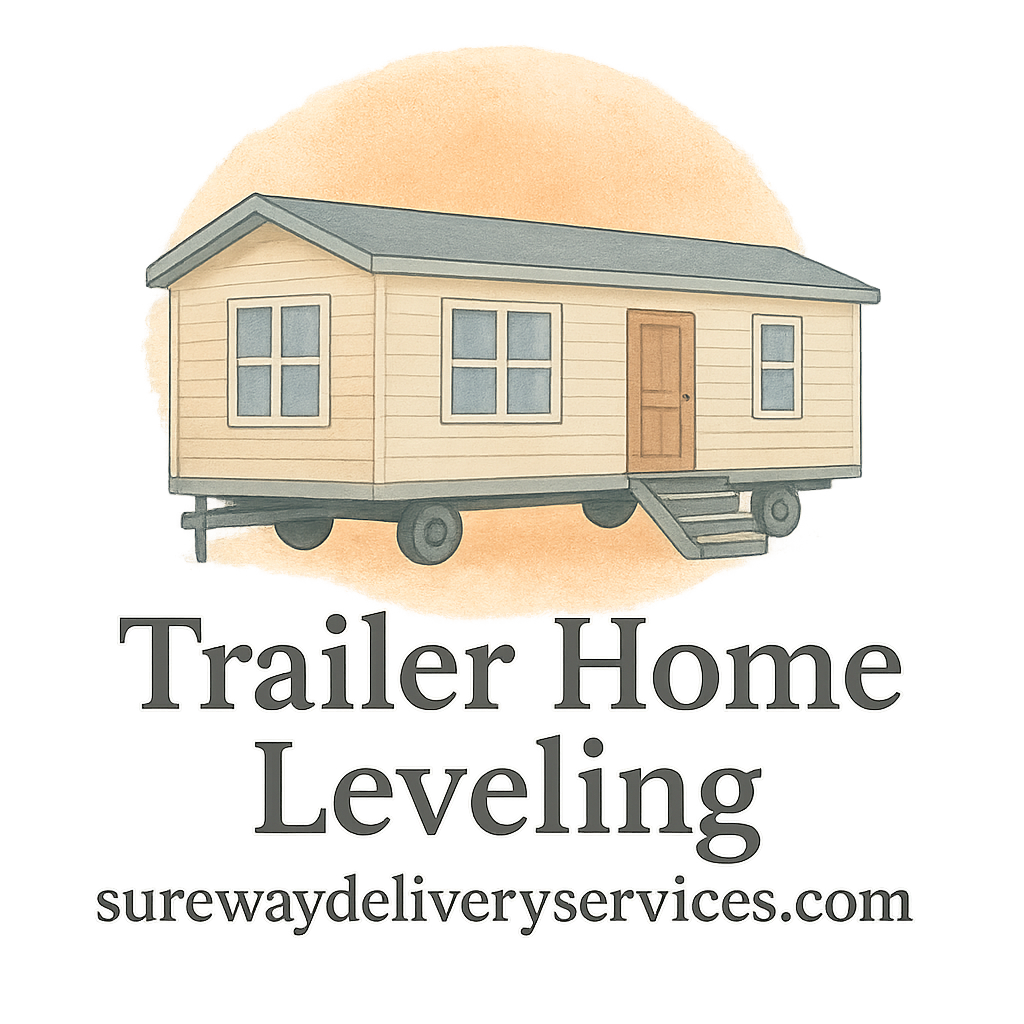Leveling your trailer home might not sound like a thrilling adventure—but when your floors creak or doors don’t close properly, it becomes a necessary one. If you’re scratching your head over how much it’s going to cost, you’re not alone. Budgeting for trailer home leveling is a tricky business, but it doesn’t have to be overwhelming. Let’s break down 8 smart and easy ways to estimate your trailer home leveling budget without losing your sanity (or your savings).
Understanding the Basics of Trailer Home Leveling
Before diving into numbers, it’s crucial to get your basics right. Trailer home leveling is the process of making sure your mobile or manufactured home sits evenly on its foundation. An uneven trailer isn’t just annoying—it’s risky.
For a quick introduction to what trailer home leveling involves, you can check out this basics guide on Trailer Home Leveling.
Why Budgeting Matters More Than You Think
If your trailer isn’t level, it can mess with plumbing, windows, doors, and even cause structural damage. Fixing these later will cost way more than just leveling it now. That’s why budgeting from the start saves money in the long haul.
1. Assessing the Current Condition of Your Trailer
Spotting Visible Signs of Leveling Issues
Look for things like tilted floors, misaligned doors, or cracked walls. These are classic signs your trailer might be leaning like the Tower of Pisa. Identifying early can prevent a budget blowout.
Check out this helpful list of leveling warning signs.
When to Call a Pro for Inspection
Sometimes the signs aren’t obvious. In that case, it’s wise to get a professional inspection. They can spot potential issues you might overlook—and give you an idea of costs before things get worse.
2. Know the Common Costs Involved
Labor, Tools, and Materials
On average, trailer home leveling can range from $500 to $3,000 depending on size, condition, and local labor rates. You’ll be paying for jacks, shims, blocks, and skilled hands.
Want to know how tools affect your budget? Dive into this guide on trailer leveling tools.
Hidden Costs You Might Miss
Don’t forget extra expenses like transportation, site prep, or damaged support piers. They sneak up fast if you’re not prepared.
For smart planning, see this page on budgeting strategies.
3. DIY vs. Professional Leveling
Cost Savings of DIY
Going the DIY route? You might save some bucks, especially if you’ve got the right tools and know-how. A basic leveling kit runs between $300–$800.
Here’s a breakdown of common techniques and methods used in both DIY and pro jobs.
When Professional Help is Worth It
Got a double-wide trailer or a home with structural issues? That’s a sign to bring in the big guns. Professionals might cost more upfront but save you money (and back pain) later.
Find trusted help through service hiring advice.

4. Research Local Service Providers
Reading Reviews and Comparing Prices
Don’t just go with the first quote you get. Look at customer reviews and see how other homeowners felt about their experience.
What to Ask Before You Hire
Ask for written estimates, breakdowns of cost, and timeframes. Transparency now saves arguments later.
Explore suggested service packages.
5. Use Online Estimation Tools
Pros and Cons of Online Calculators
Online calculators are a quick way to get ballpark numbers. But don’t rely on them alone—they might not account for your trailer’s unique quirks.
Getting More Accurate Quotes
Use calculators, then call local pros to compare. This gives you a realistic picture. And remember to look for tips under cost-saving advice.
6. Factor in Maintenance and Inspections
Annual Maintenance Budgeting
Routine checkups keep your trailer in tip-top shape and save you big bucks over time. Budget for at least one annual visit from a pro.
Here’s why annual inspections should be part of your plan.
Inspection Tips for Saving Money
Use a checklist before calling in a pro. That way, you’ll know what to expect—and avoid unnecessary charges.
Download a helpful maintenance checklist to stay ahead.
7. Think Long-Term and Add Cushion
Planning for Emergencies and Repairs
Emergencies happen. Your leveling job might reveal hidden damage. Add at least 10–15% to your budget just in case.
Check out what’s involved in trailer maintenance.
Creating a Flexible Budget
Budgeting shouldn’t be rigid. Make space for changes, add-ons, and surprise fixes.
Here’s how to plan without getting overcharged.
8. Learn from Customer Experiences
Real-Life Budgeting Success Stories
People who’ve been there, done that, can be your best teachers. Read their success stories and take notes.
What You Can Learn from Others’ Mistakes
Avoid costly blunders by reading up on common trailer issues others faced.
Conclusion
Leveling your trailer home is one of those things you can’t put off for long. But that doesn’t mean it has to break the bank. From understanding signs to using online tools, reading reviews, and planning for emergencies, estimating your trailer home leveling budget is 100% doable with the right steps. Keep your eyes open, ask the right questions, and don’t forget—your home deserves to sit strong and steady.
Explore more expert guides at Trailer Home Leveling and stay one step ahead!
FAQs
1. How often should I re-level my trailer home?
Ideally, every 3–5 years—or sooner if you notice signs like sticking doors or sloping floors.
2. Can I level my trailer home myself?
Yes, with the right tools and some know-how. But larger trailers or severe issues should be handled by pros.
3. What’s the average cost of trailer home leveling?
Anywhere from $500 to $3,000 depending on size, complexity, and local labor rates.
4. Are there any free tools to help estimate the budget?
Absolutely! Use online calculators and also read guides from Trailer Home Leveling.
5. What are signs my trailer is out of level?
Cracked walls, uneven floors, hard-to-close doors, and windows that stick.
6. Do I need permits for leveling my trailer home?
In some areas, yes. Always check with your local municipality or zoning office.
7. What can cause a trailer to become unlevel?
Soil movement, poor initial installation, weather changes, and natural settling over time.


